Category: Currently Showing
-
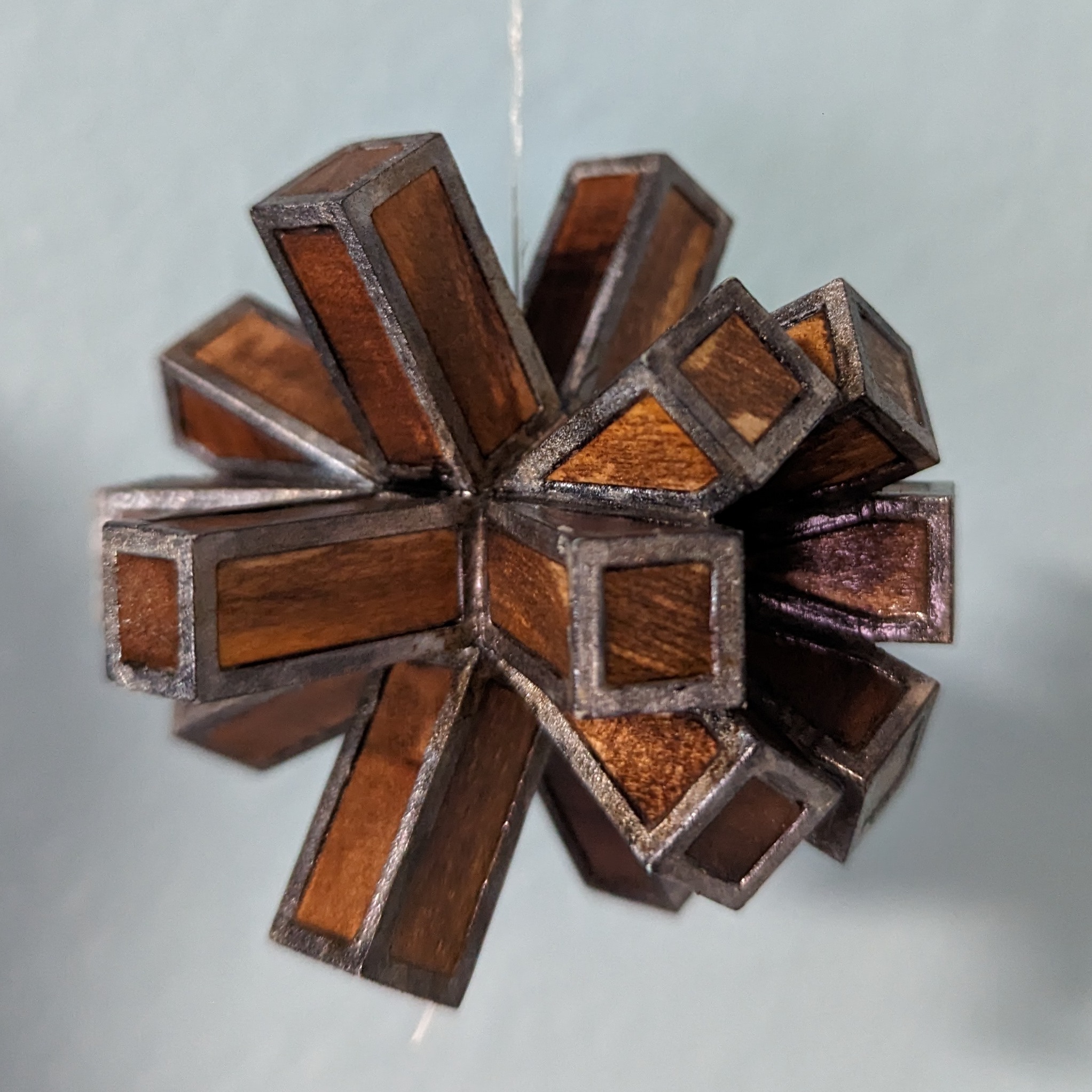
Matthew Reeves (Compound of nine prisms)
9 Prisms, Polylactic acid plastic, wood, and acrylic paint [90 F, 186 E, 98 V] This complex form is created by the superposition of nine differently rotated copies of the same square prism, one of the simplest and most familiar polyhedra.
-
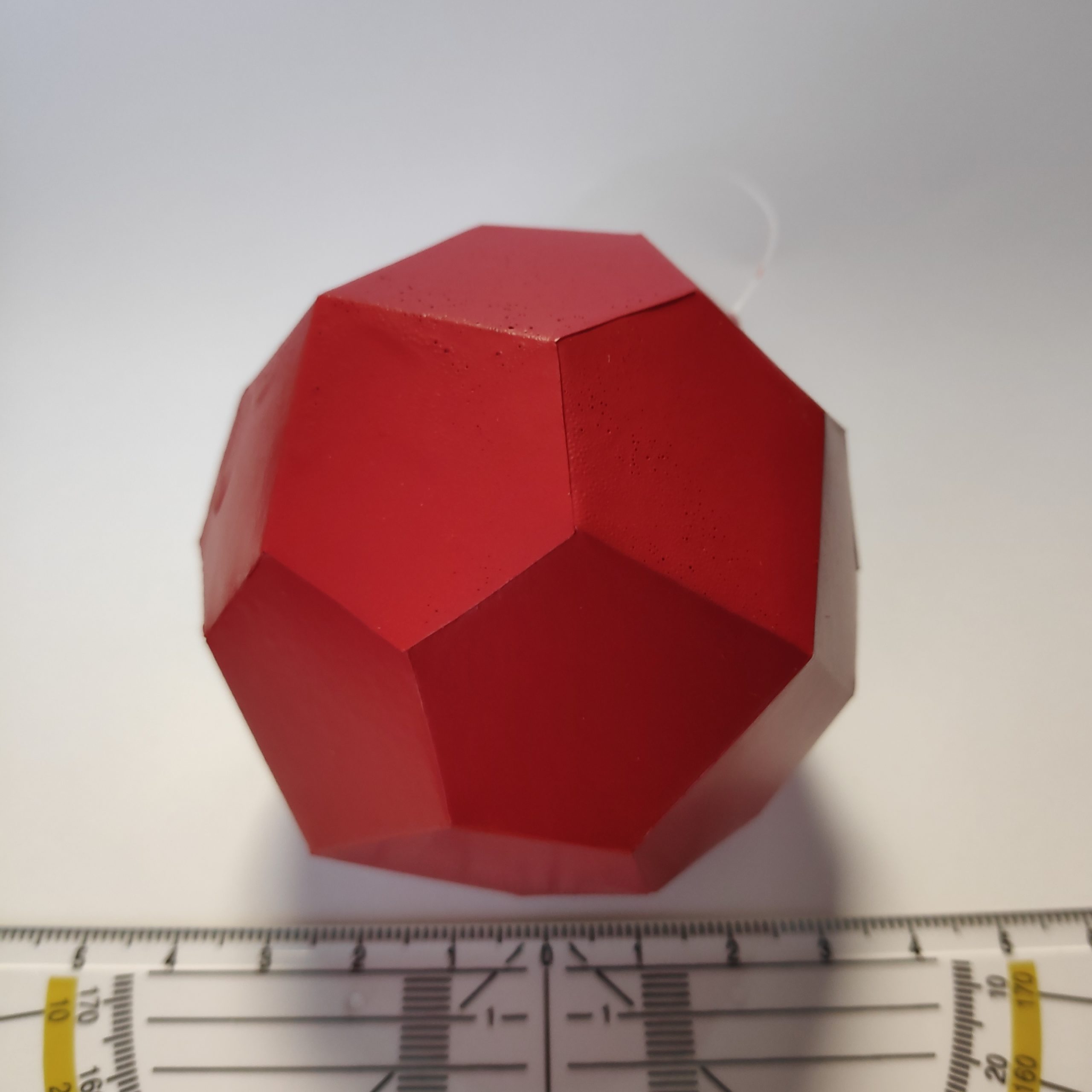
Moritz Seebode (Pentagonal icositetrahedron)
Untitled, rubberized cardstock [24 F, 60 E, 38 V] This polyhedron is one of 13 shapes known as the Catalan solids: polyhedra with identical, interchangeable faces that bear a special relationship with the Archimedean solids called “duality.” This particular one is the dual of the snub cube, meaning that it has one vertex for each…
-
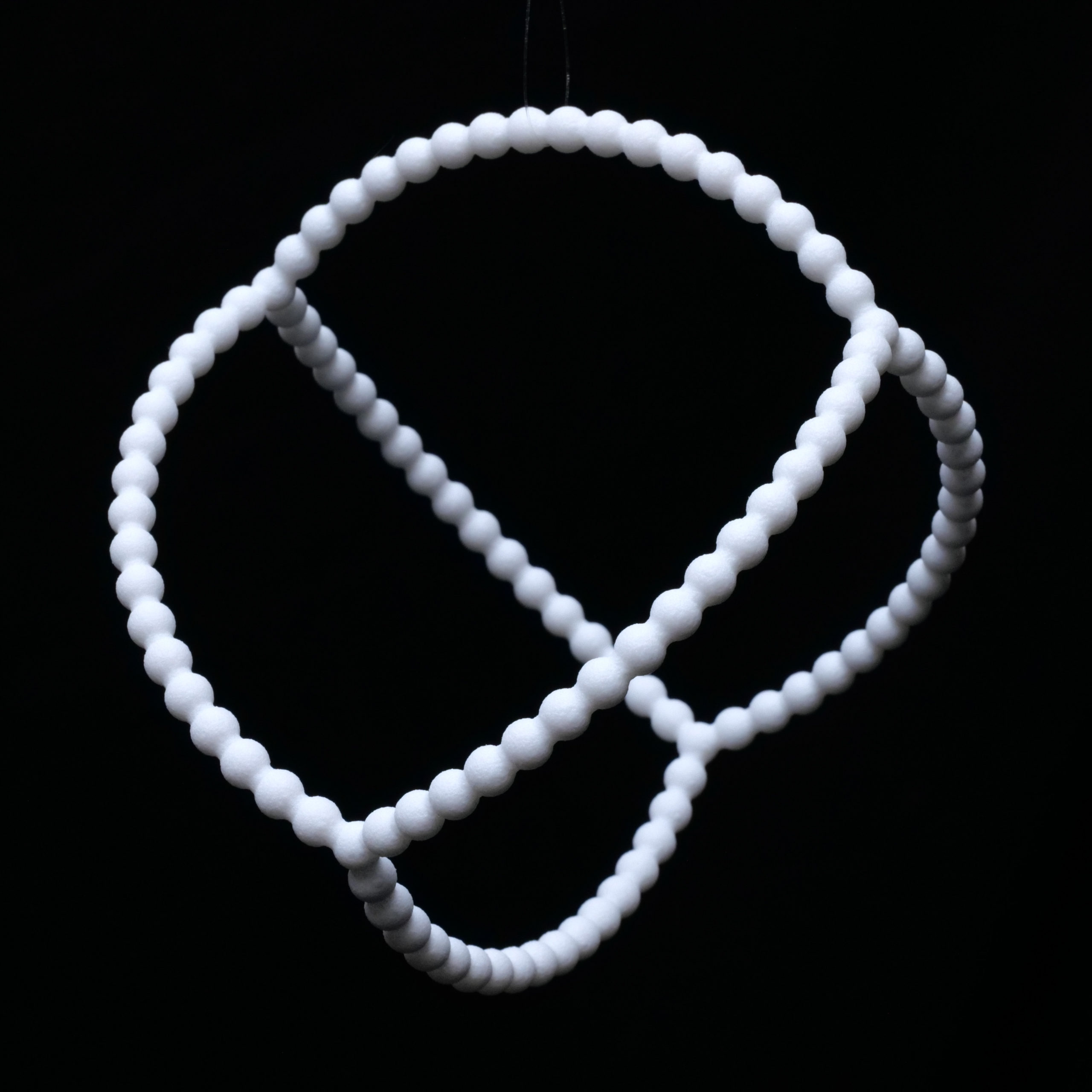
Henry Segerman (Vertex-augmented tetrahedron)
106-108-4 Topological Polyhedron, 3D-printed nylon [4 F, 108 E, 106 V] This sculpture illustrates a subdivision of a sphere into four parts. With the correct interpretation of what vertices, edges, and faces are, we can think of this as a “topological” polyhedron where each part of the subdivision is a face with 54 sides. Most…
-
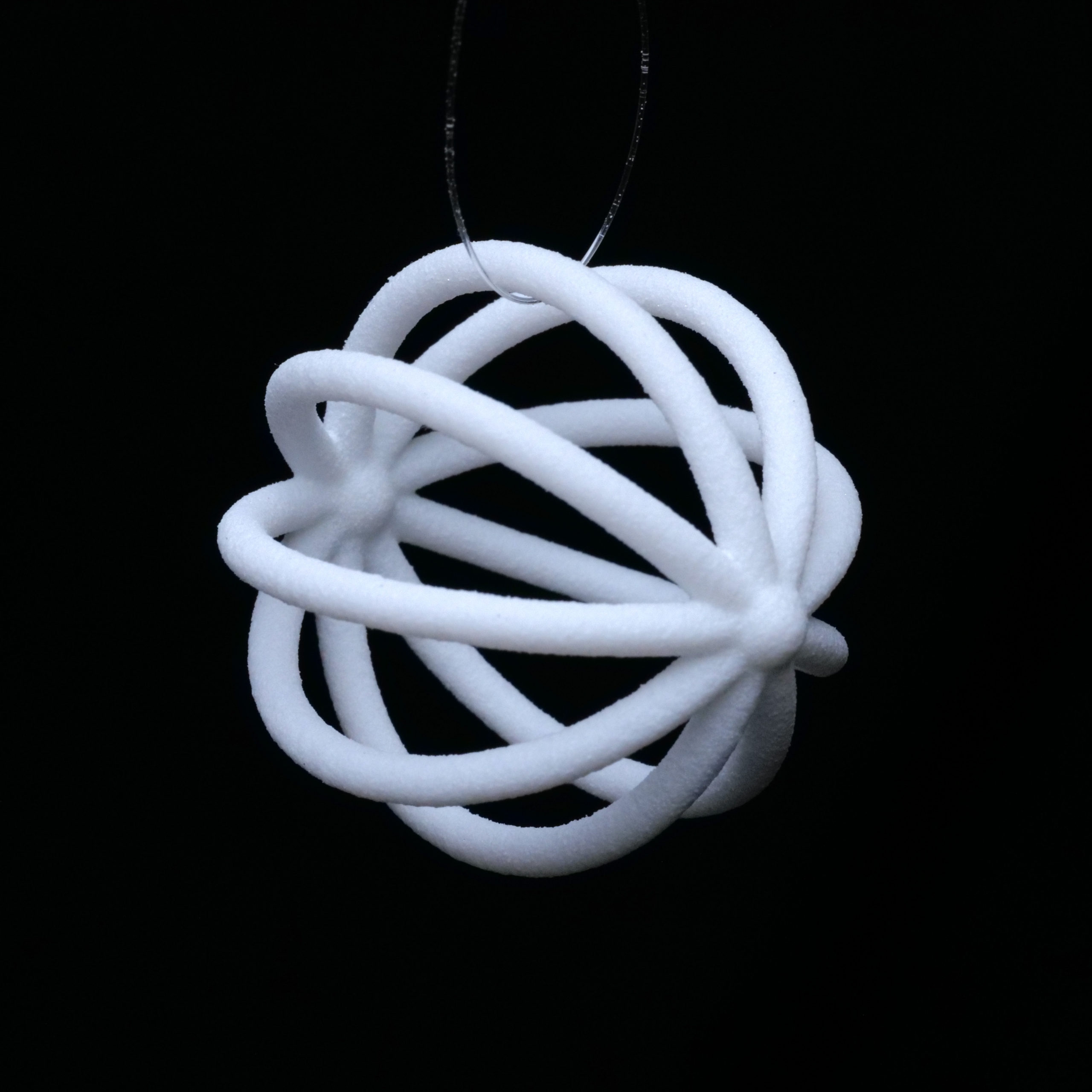
Henry Segerman (Enneagonal hosohedron)
2-9-9 Topological Polyhedron, 3D-printed nylon. [9 F, 9 E, 2 V] This sculpture illustrates a subdivision of a sphere into nine bigons. A bigon is a polygon with only two sides. This is impossible for a polygon with straight sides living in the plane, but is no problem if we take a more topological version…
-
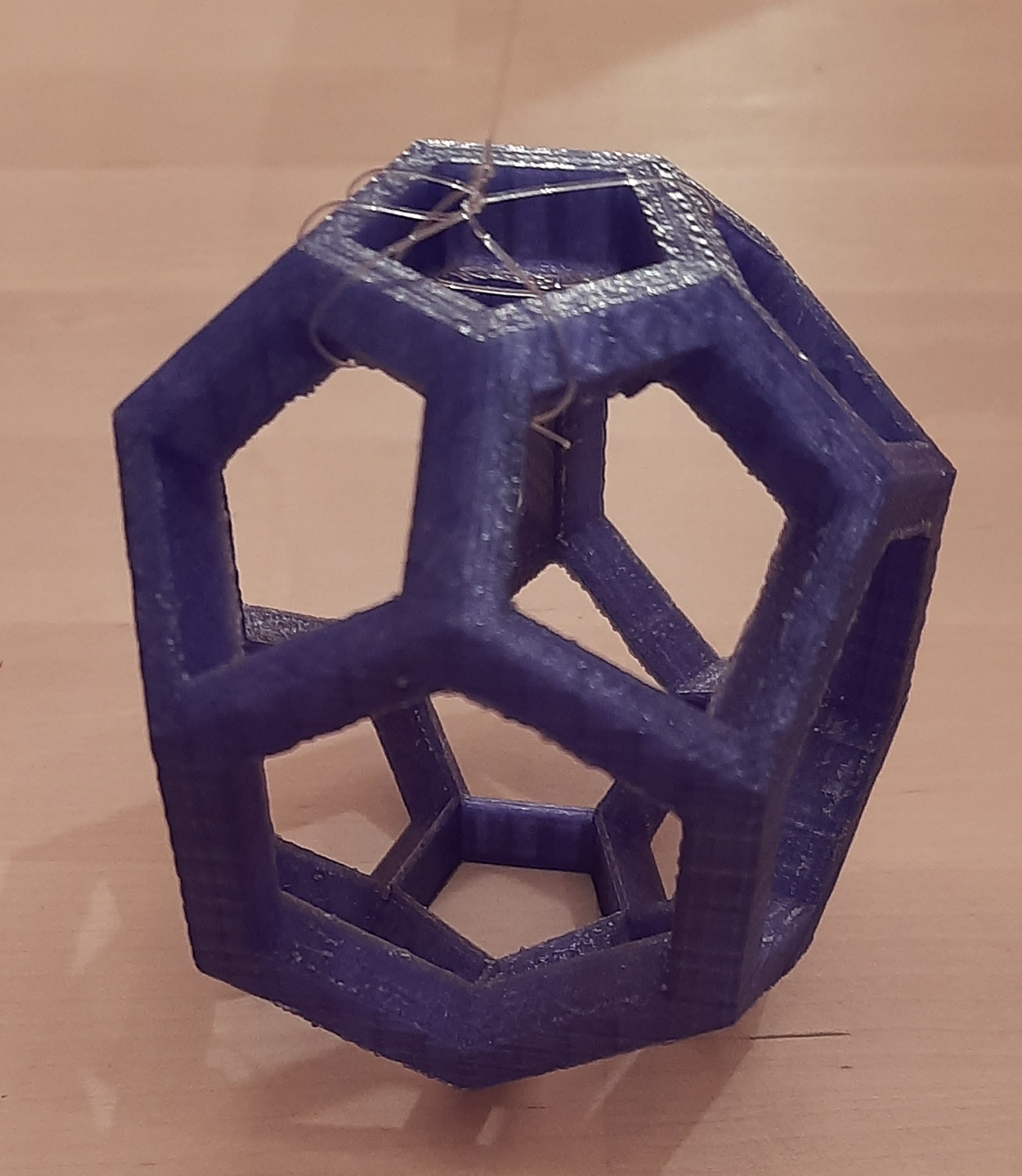
shihhsit (Elongated dodecahedron)
Untitled, 3D-printed polyethylene plastic. Contributed by Studio Infinity. [17 F, 45 E, 30 V] This solid derives from another shape with twelve regular pentagons for faces. You take such a regular dodecahedron and split it into identical halves along a zig-zag path around its “equator.” Then pull them apart and twist one of the pieces…
-
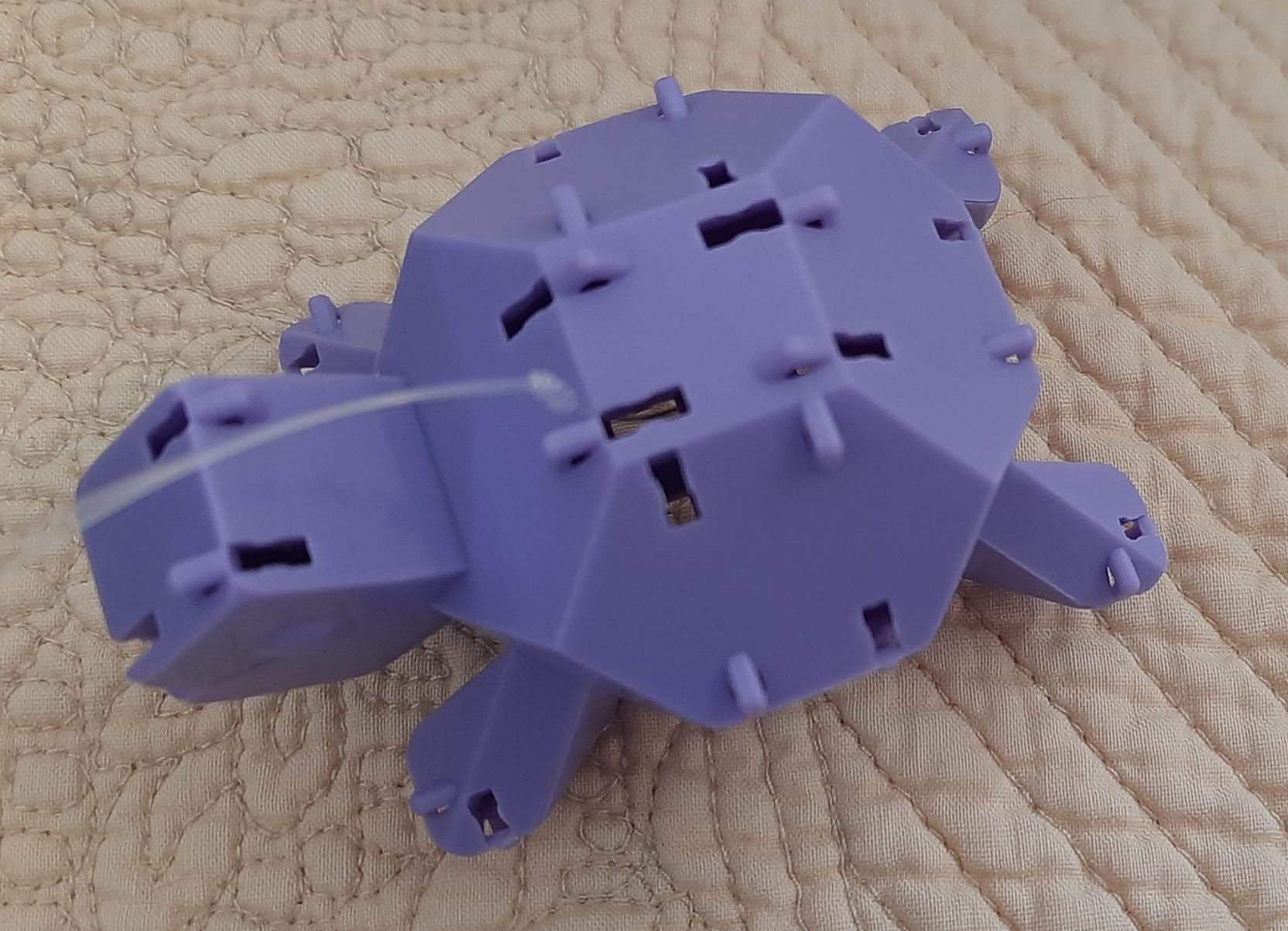
Jonathan Stapleton (Irregular pentacontaheptahedron)
Reptangle, injection-molded plastic. Contributed by Studio Infinity. [57 F, 121 E, 66 V] This fanciful polyhedral design (instances of which can snap together in multiple ways) was marketed as “Reptangles: Turtles That Snap” by the Fat Brain Toy Company.
-
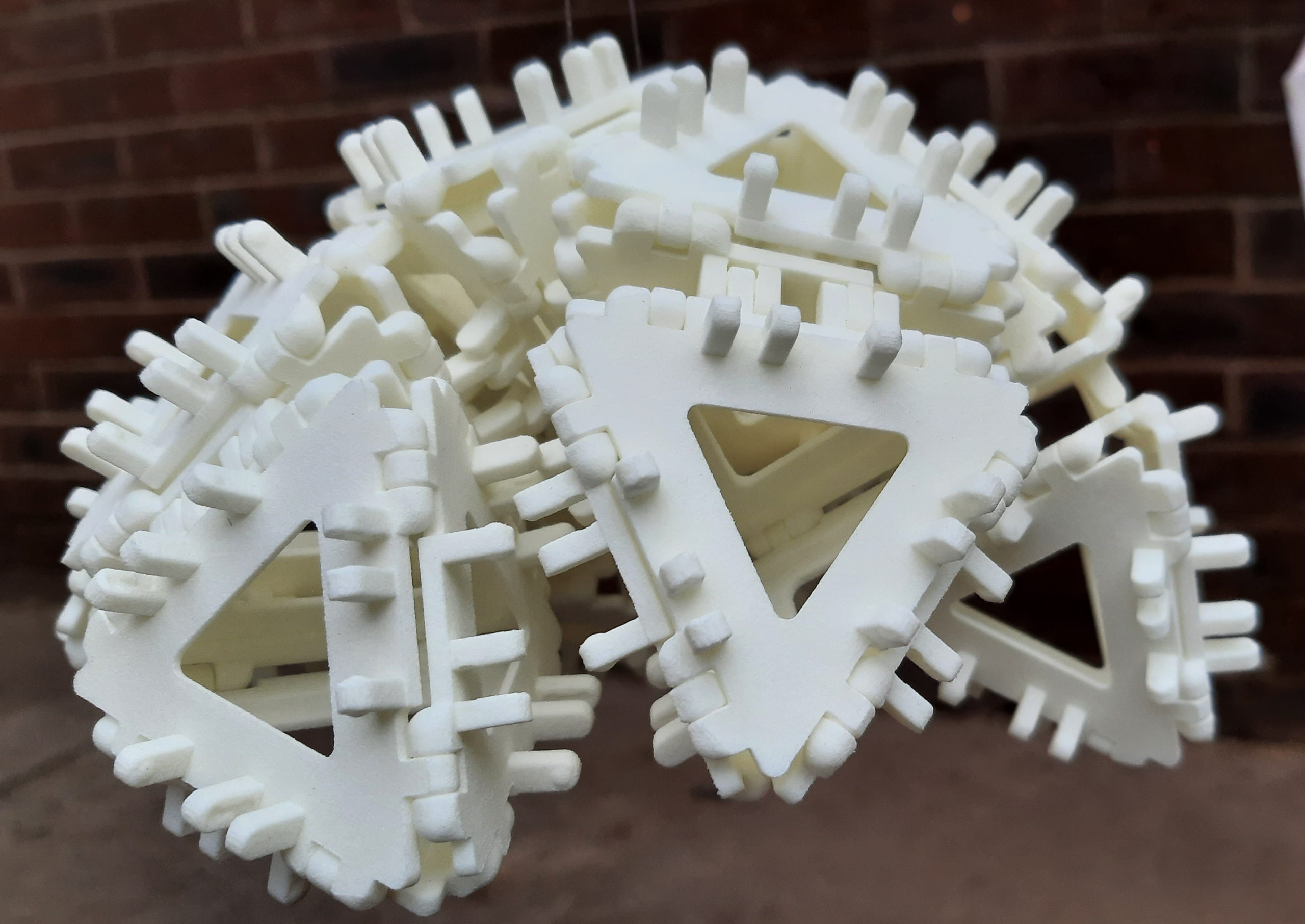
Studio Infinity (Compound of thirteen regular tetrahedra)
Disjointed Beetle, 3D-printed nylon [28 F, 42 E, 16 V] Aristotle hypothesized in the fourth century BCE that identical regular tetrahedra could fill all of space with no gaps or overlaps. In reality, as proven roughly two millennia later, it is not even possible to make a loop of regular tetrahedra connected face to face.…
-
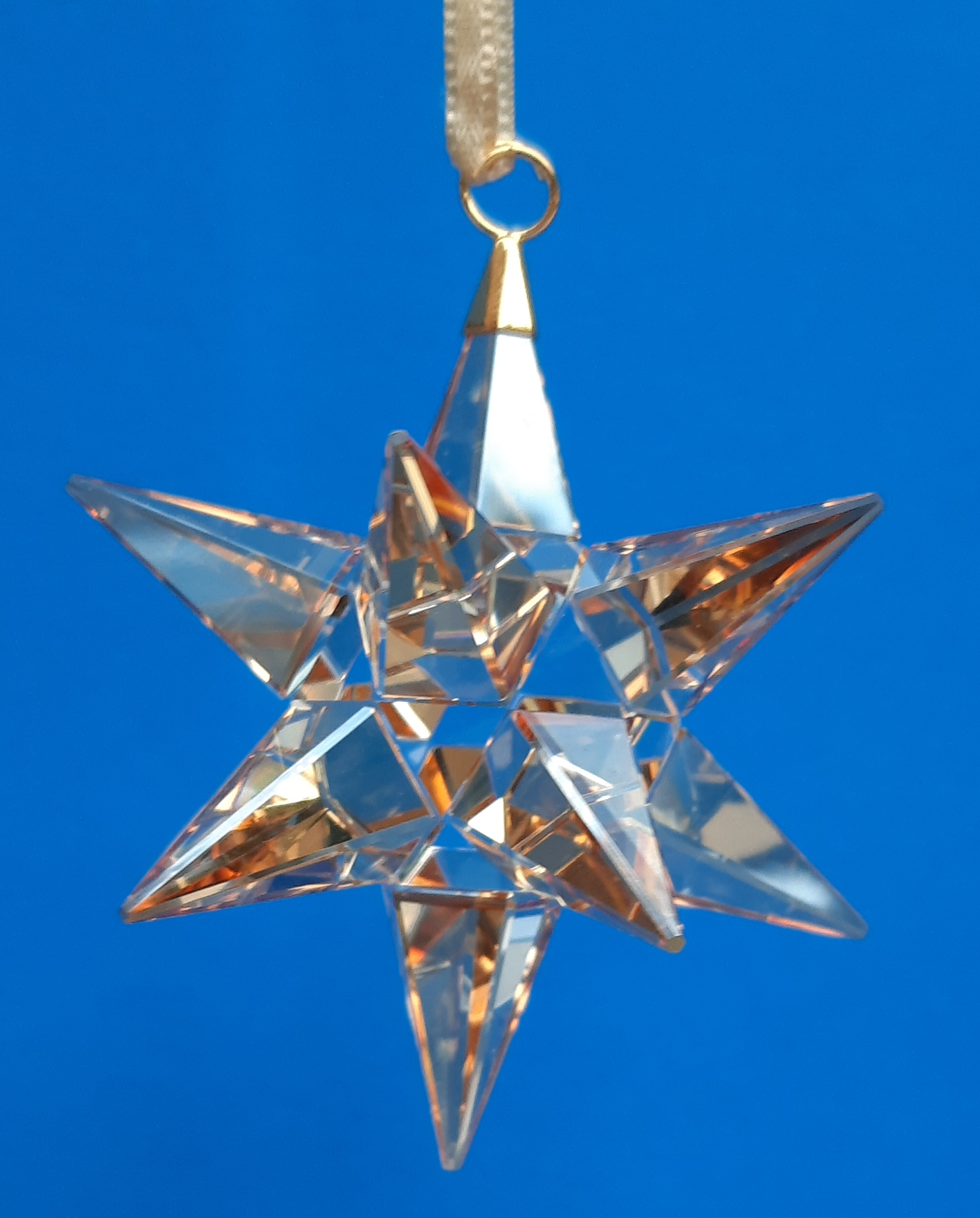
Swarovski (Pentagonally elevated icosidodecahedron)
Star Ornament, lead glass. Contributed by Studio Infinity. [80 F, 120 E, 42 V] This Swarovski crystal shows how polyhedral forms often show up in decorative and ornamental roles. In the geometric name of this shape, the phrase pentagonally elevated means that pentagonal pyramids have been attached to every five-sided face of an underlying icosidodecahedron.
-
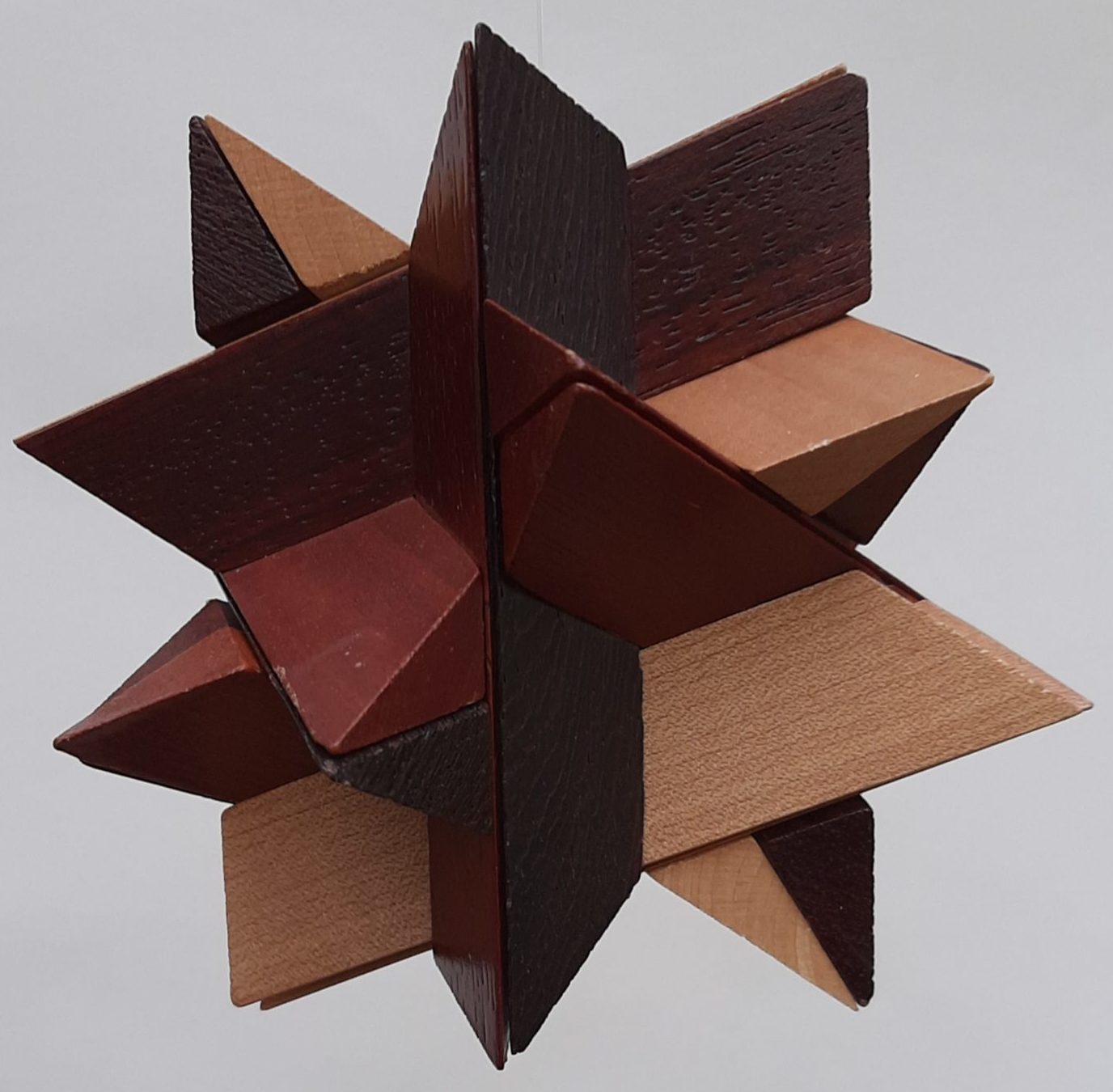
Artist unknown (Compound of twelve triangular prisms)
Untitled, cherry and maple wood. Contributed by Glen Whitney. [48 F, 120 E, 74 V] This polyhedral take-apart puzzle is based on the same geometry as the Tetraxis ™ reconfigurable sculpture by Jane and John Kostick, but cuts the underlying equilateral triangular prisms along different planes to produce hexagonal and rhombic faces rather than triangular…
-
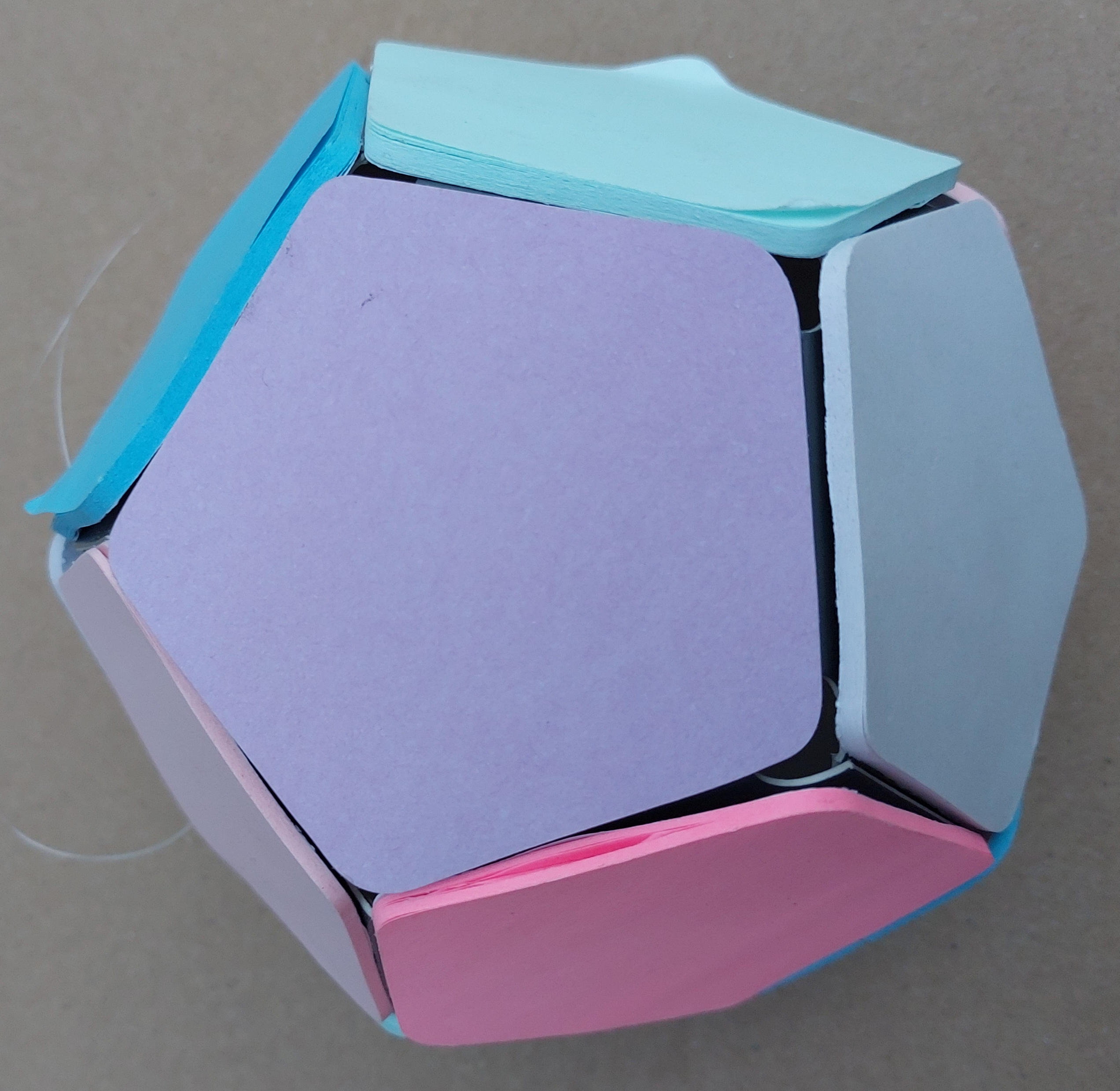
Manufacturer unknown (regular dodecahedron)
Note block, paper and plastic. Contributed by Glen Whitney. [12 F, 30 E, 20 V] This item departs from the norms of the show: it is not an art piece and it was not specifically produced to be a part of Polyplane. Rather, this consumer product shows the degree to which polyhedral forms have seeped…